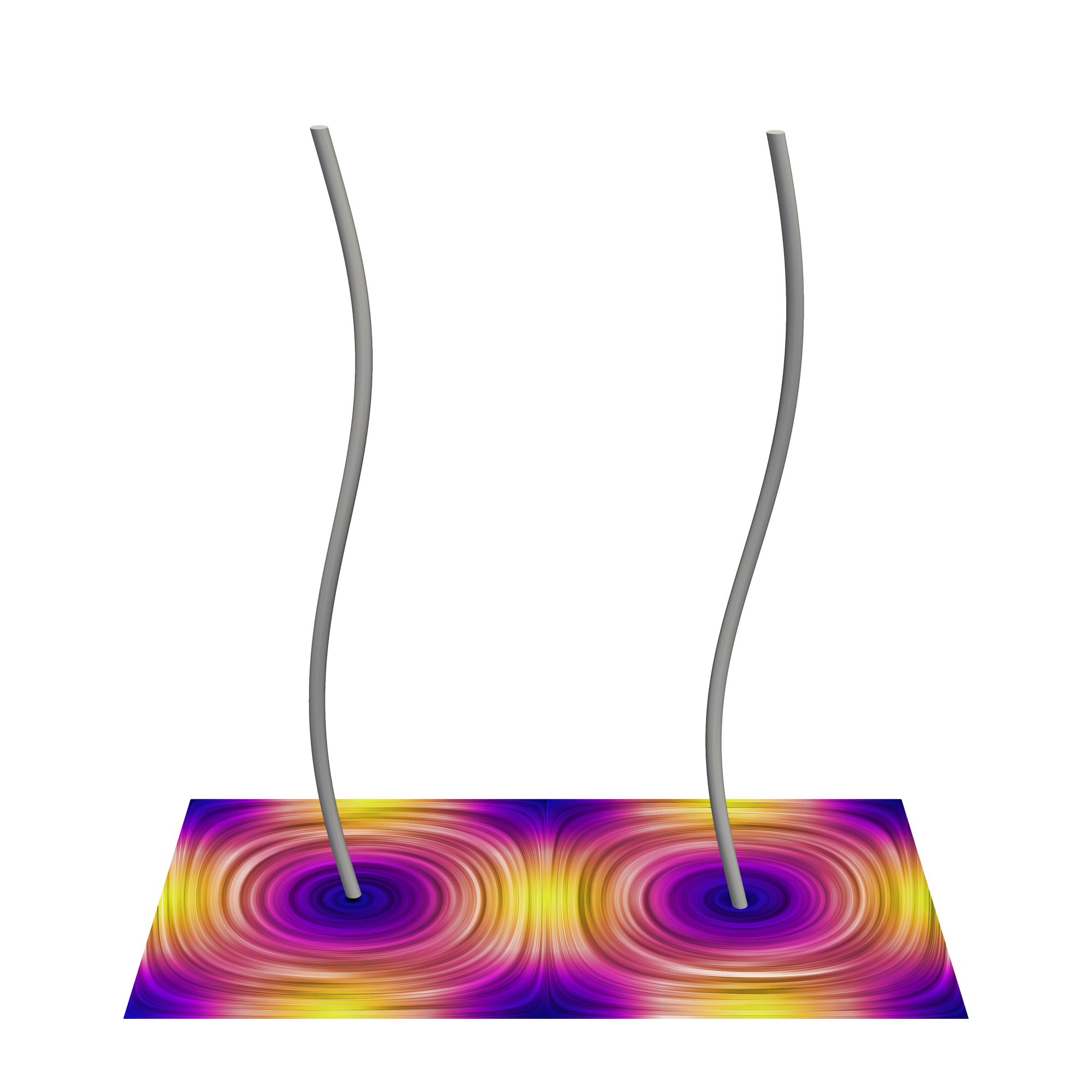VCG - Vortex Core Lines

|
Description
The VortexCores filter computes vortex core lines of point (node) data. This filter requires unstructured grid data and produces geometry output.
Details
Vortices are an important construct in fluid flow (represented as a vector field $u(x)$). They represent the possibly curved "axis" line of a vortex, i.e., curves around which particles swirl. A typical phenomenon, we instinctively imagine when dealing with vortices, would be tornadoes.
Vortex core lines aim to extract the center of such a vortex and, thus, give important insight about the data at hand.
This plugin implements two methods to identify vortex core lines.
The Sujudi-Haimes algorithm
[Sujudi]
and the Levy criterion
[Levy]
.
Sujudi and Haimes define a point $x$ as being part of a core line if $u(x)$ is parallel (or anti-parallel, used in this context as a synonym) to the real eigenvector of the Jacobian $\nabla u(x)$, with the additional criterion that the two other eigenvalues are complex.
The approach by Levy also defines core lines by means of points where two vectors are parallel, but in this case the two vectors are the vorticity vector $\nabla \times u(x)$ and velocity.
Since the approach is local, one typically obtains spurious core line parts, which need to be filtered. A primary means for suppressing unimportant core line parts is to increase the required vortex strength
MinStrength
. The vortex strength is the absolute imaginary part of the Jacobian of the projected velocity (projected to a plane perpendicular to the core), scaled such that the quantity get problem-independent. It is a measure for how fast the flow rotates around the core line. An other important approach (which is typically employed subsequently) is to suppress them by the maximum angle
MaxAngle
between their tangent and the vector of the underlying field. Well-defined vortex core lines are consistent with stream lines, and therefore exhibit low angles. However, this angle should not be set to values higher than $45^{\circ}$. Remaining, typically small, core line fragments are rejected by requiring a minimum number of vertices
MinimumNumberOfVertices
per vortex line.
Input
vtkUnstructuredGrid
Output
vtkPolyData
Parameters
Authors
Martin Roth, Ronald Peikert, Filip Sadlo
References
D. Sujudi, R. Haimes:
Identification of swirling flow in 3-D vector fields
In 12th Computational Fluid Dynamics Conference,
pp. 1715,
1995.
Y. Levy, D. Degani, A. Seginer:
Graphical visualization of vortical flows by means of helicity
AIAA journal,
vol. 28,
no. 8,
pp. 1347–1352,
1990.
Acknowledgements
